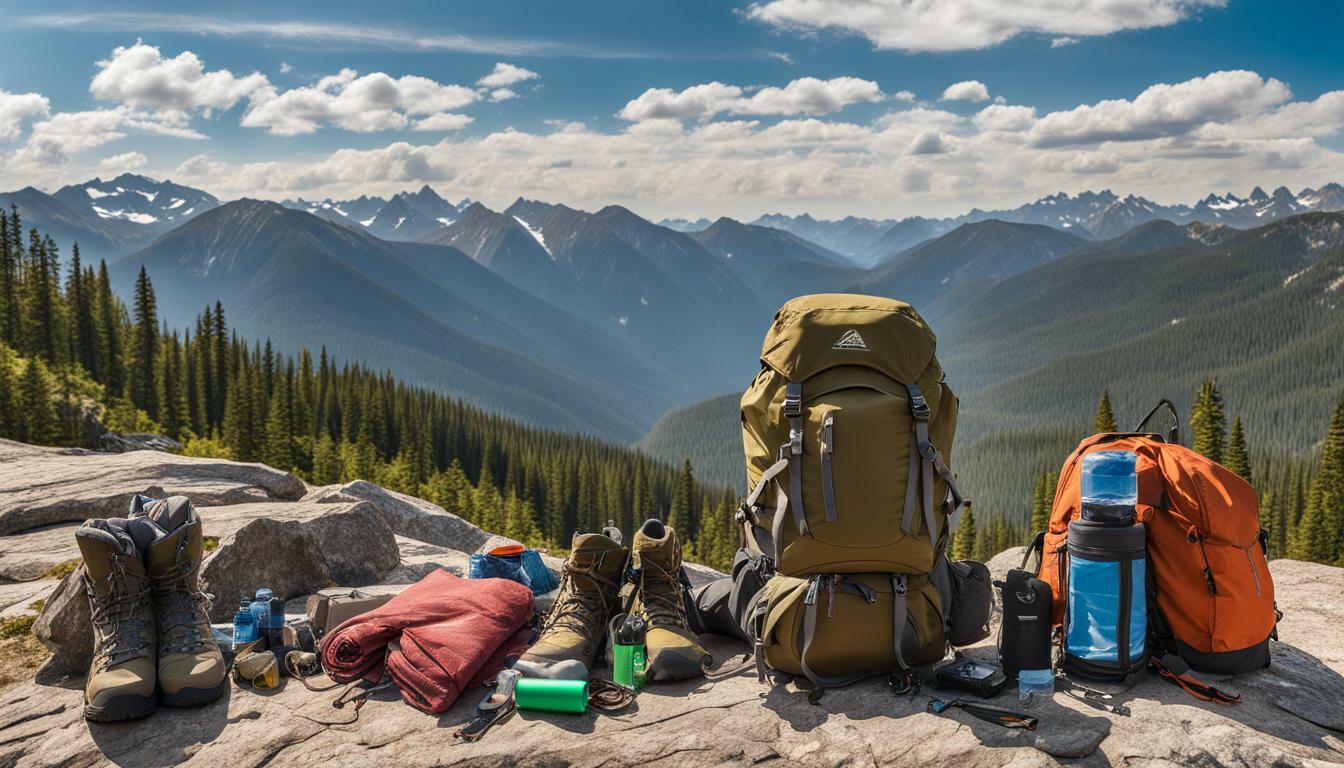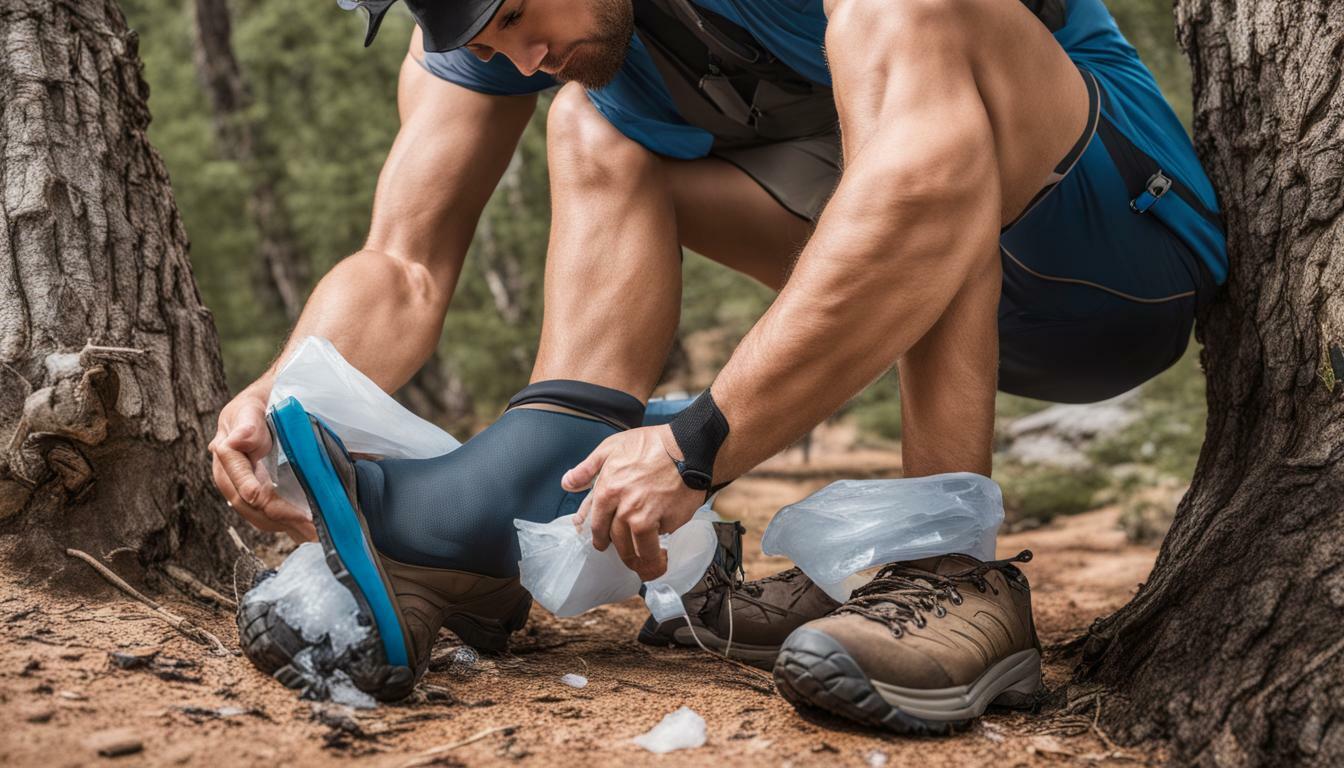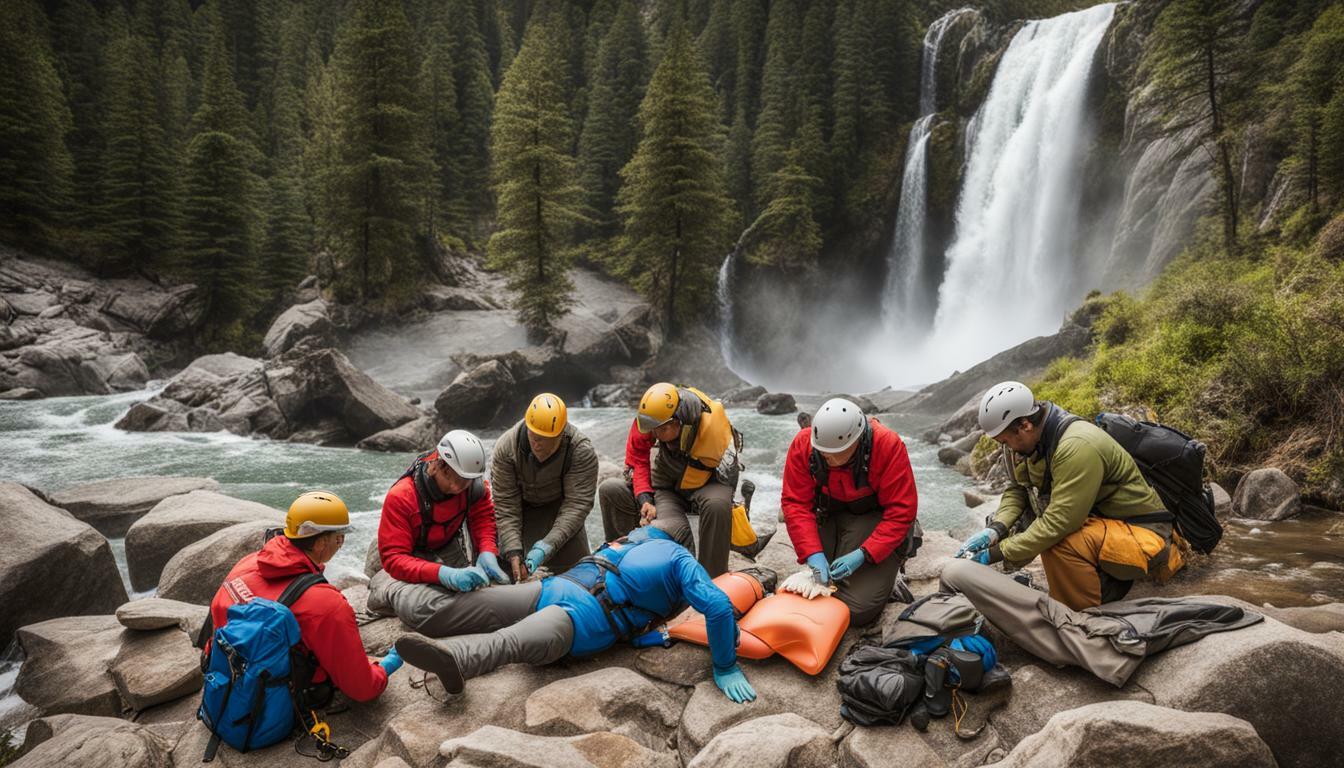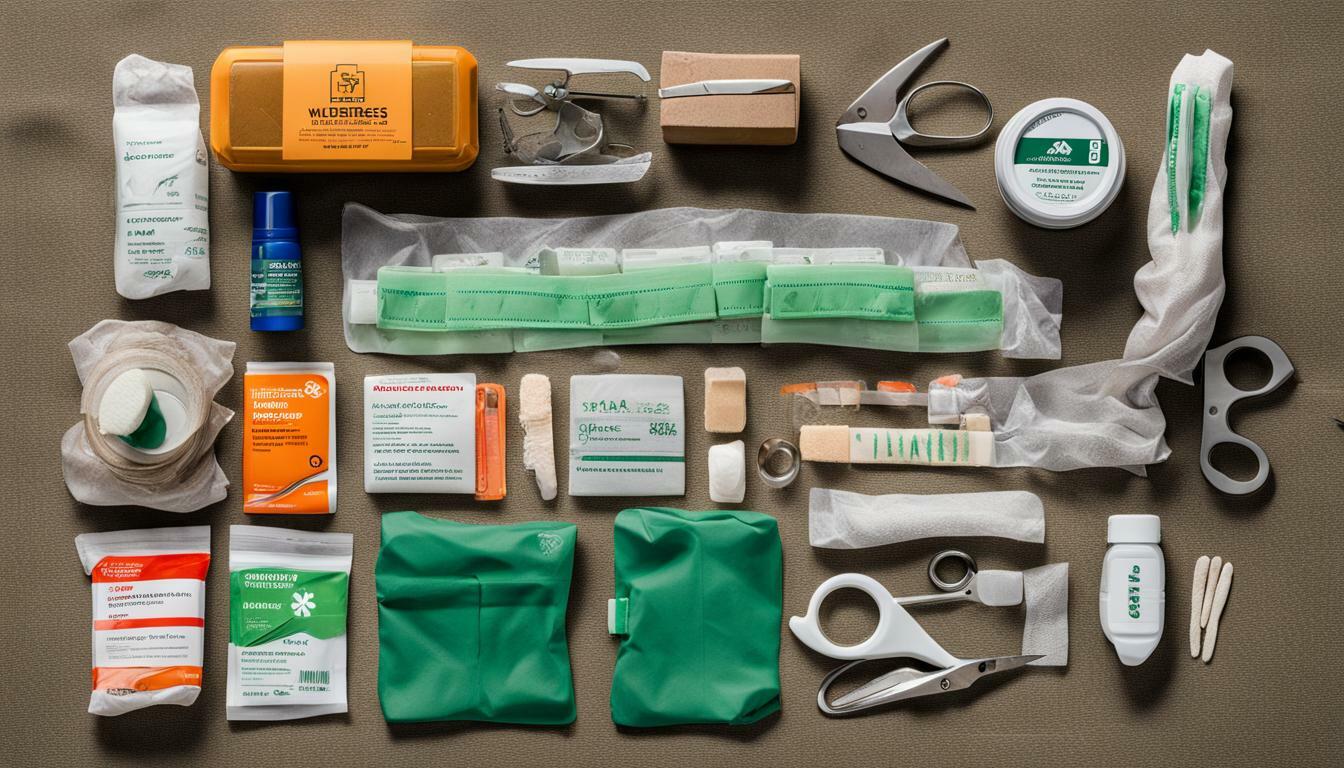Embarking on a wilderness adventure can be an incredibly rewarding experience, but it’s important to remember that accidents can happen anywhere, at any time. Being prepared with a comprehensive first aid kit can make all the difference when it comes to responding to unexpected injuries and emergencies.
Before you set out on your next adventure, make sure you have the right gear to stay safe and healthy. Here are some of the essential items to consider when creating a comprehensive first aid kit for wilderness adventures:
Key Takeaways
- Creating a comprehensive first aid kit is essential for any wilderness adventure
- Include wilderness safety gear, essential first aid supplies, and special considerations for remote settings
- Maintain, restock, and seek professional help when necessary
Understanding Wilderness Safety Gear
When it comes to wilderness adventures, being prepared is key for staying safe. Along with a comprehensive first aid kit, it’s crucial to have the right wilderness safety gear on hand. This gear can help you stay warm, dry, and protected, even in extreme conditions.
One essential item for any outdoor emergency kit is a reliable shelter. Tents, tarps, and emergency blankets are all great options for protecting you from the elements. Additionally, having a fire starter, such as matches or a lighter, can help you stay warm and cook food if needed.
Another important consideration for wilderness safety gear is appropriate clothing. Layers are important for regulating body temperature, and waterproof clothing can help prevent hypothermia. Items like hats and gloves can also offer important protection for your extremities.
A first aid manual and a map and compass are also important items to include in your outdoor emergency kit. These tools can help you navigate the wilderness safely and respond appropriately to any injuries or emergencies that may arise.

Remember, when packing your wilderness safety gear, you should always consider the specific needs of your trip. Whether you’re embarking on a short hike or a multi-day expedition, being well-prepared can mean the difference between a successful adventure and a dangerous situation.
Assessing Wilderness First Aid Supplies
When creating a comprehensive first aid kit for your wilderness adventures, it is essential to include the necessary wilderness first aid supplies to address any injuries or emergencies that may occur. Here are some of the essential items you should consider for your kit:
| Item | Purpose |
|---|---|
| Bandages (variety of sizes) | Used to cover and protect wounds and stop bleeding. |
| Gauze pads and rolls | Used to clean and dress wounds. |
| Adhesive tape | Used to secure dressings and splints in place. |
| Antiseptics (such as alcohol wipes or hydrogen peroxide) | Used to clean wounds and prevent infection. |
| Tweezers | Used to remove debris or splinters from wounds. |
| Scissors | Used to cut clothing or bandages. |
| Instant cold packs | Used to reduce swelling and inflammation. |
| Medications (such as pain relievers and allergy medicine) | Used to address specific medical conditions or symptoms. |
It’s important to assess the specific needs of your wilderness adventures when selecting supplies to include in your first aid kit. For example, if you are camping in an area with a high risk of insect bites, you may want to include insect bite treatment in your kit. If you are hiking in a remote area, it’s important to bring enough supplies to address any potential injuries or emergencies.
Having a comprehensive first aid kit with essential items for wilderness first aid can provide peace of mind and ensure that you are prepared for any situation that may arise during your outdoor adventures.
Building Your Wilderness First Aid Kit
Building a wilderness first aid kit may seem overwhelming, but with careful planning and organization, it can be a straightforward process. Here are some practical tips to help you assemble your own comprehensive first aid kit for wilderness adventures:
- Assess your needs: Consider the specific activities you will be doing and the potential risks involved. This will help determine the essential items to include in your kit.
- Choose the right container: Select a portable container that is durable, waterproof, and easy to access. A clear plastic storage bin or a backpack with multiple compartments are good options.
- Gather essential items: Some key essentials include bandages, antiseptics, medications, and tools. Here is a comprehensive list of items to consider:
| Item | Purpose |
|---|---|
| Adhesive bandages | For covering cuts and scrapes |
| Sterile gauze | For cleaning wounds and applying pressure |
| Ace bandage | For wrapping sprains and reducing swelling |
| Tweezers | For removing splinters and ticks |
| Scissors | For cutting clothing, bandages, and tape |
| Antiseptic wipes | For cleaning wounds and preventing infection |
| Pain relievers | For managing pain and reducing fever |
| Allergy medication | For treating allergic reactions to insect bites or food |
| Anti-diarrhea medication | For treating stomach issues |
| Trauma pad | For controlling bleeding |
| Medical tape | For securing bandages and dressing wounds |
| Emergency blanket | For keeping warm and preventing hypothermia |
| Emergency whistle | For attracting attention and signaling for help |
Remember to also include any prescription medications or specialized equipment specific to your needs.
Once you have gathered all the essential items, it’s important to organize them in a logical manner, with the most frequently used items easily accessible. Be sure to regularly check the expiration dates and restock your kit as needed.

By following these guidelines, you can build a comprehensive first aid kit that will help keep you prepared and safe during your wilderness adventures.
Addressing Common Wilderness Injuries
While exploring the great outdoors can be invigorating and awe-inspiring, it’s important to remember that the wilderness poses its own set of dangers. Injuries can occur unexpectedly and without warning, so it’s essential to be prepared. Here are some common wilderness injuries and how to address them:
Sprains and Strains
Sprains and strains are common injuries that can occur when hiking or participating in other outdoor activities. The best way to address these injuries is with the RICE method: Rest, Ice, Compression, and Elevation. Rest the affected area, apply ice to reduce swelling, use compression to reduce inflammation, and elevate the injured limb to reduce pain and swelling. A compression bandage and cold pack should be included in your first aid kit.

Cuts and Abrasions
Cuts and abrasions can occur when hiking through dense underbrush or navigating rocky terrain. To treat these injuries, clean the affected area with antiseptic wipes and apply a sterile bandage to prevent infection. It’s also a good idea to include a pair of tweezers in your kit to remove any debris that may be embedded in the wound.
Burns
Burns can occur when cooking over an open flame or coming into contact with hot surfaces. If you or a companion suffers a burn, run the affected area under cool water for at least 10 minutes to reduce pain and swelling. Apply a sterile dressing to the wound and take an over-the-counter pain reliever to manage discomfort. A burn dressing or gel should also be included in your first aid kit.
Insect Bites and Stings
Bites and stings from insects can cause discomfort and even life-threatening allergic reactions. If you or a companion is bitten or stung, use a topical antihistamine cream to reduce itching and swelling. It’s also a good idea to pack an epinephrine auto-injector if you or a companion has a known allergy to insect bites and stings.
Remember, it’s important to assess the specific needs of your outdoor adventure and pack accordingly. A comprehensive first aid kit can help you address wilderness injuries quickly and effectively, so you can focus on enjoying your outdoor experience.
Special Considerations for Wilderness First Aid
When it comes to wilderness first aid, it’s essential to be prepared for any situation. However, certain scenarios require special considerations that may not typically arise in a traditional first aid setting. In this section, we will explore some of the unique factors that come into play when providing first aid in the wilderness.
Dealing with Extreme Weather Conditions
One of the most critical special considerations for wilderness first aid is dealing with extreme weather conditions. Whether it’s scorching hot or freezing cold, the weather can have a significant impact on a person’s health and well-being. As such, it’s crucial to take preventative measures to avoid weather-related injuries such as heat exhaustion, hypothermia, and frostbite.
When planning a wilderness adventure, be sure to research the climate and weather patterns of the region you will be exploring. Pack appropriate clothing and gear to protect yourself and your group from extreme heat or cold. Additionally, it’s important to stay hydrated and well-nourished in all weather conditions.
Wildlife Encounters
Another unique consideration for wilderness first aid is dealing with wildlife encounters. Depending on the location of your wilderness adventure, you may come across a variety of wildlife, including snakes, spiders, bears, and more. While it’s important to respect these animals’ natural habitats, it’s also essential to know how to react if a wild animal poses a threat to you or someone in your group.
First and foremost, it’s important to avoid any confrontation with wildlife whenever possible. Keep a safe distance from animals, and never attempt to approach or feed them. If you do encounter a dangerous animal, stay calm, and do not run or make sudden movements. Slowly back away while making loud noises to scare off the animal.
Adapting First Aid Practices
Finally, when providing first aid in the wilderness, it’s crucial to adapt your practices to the unique setting and situation. In many cases, you may not have access to traditional medical equipment or facilities. As such, it’s essential to rely on your wilderness first aid kit and knowledge of basic first aid techniques.
Additionally, it’s important to be familiar with the specific risks and challenges of the wilderness environment you will be exploring. This may include knowing how to navigate rugged terrain, identifying potential hazards such as poisonous plants, and understanding how to use natural resources to provide first aid when necessary.

By taking these special considerations into account, you can be better prepared to provide effective first aid in the wilderness. Remember, prevention is always the best strategy, so be sure to plan ahead and take steps to avoid potential risks whenever possible.
First Aid Training and Certification
While having a comprehensive first aid kit is essential for wilderness adventures, it is equally important to have the knowledge and skills to use it effectively. First aid training and certification is a crucial aspect of wilderness safety, and can make all the difference in an emergency situation.
There are numerous organizations that offer wilderness first aid courses, such as the British Red Cross and St. John Ambulance. These courses cover a range of topics, from basic first aid techniques to remote area management and evacuation procedures.
The benefits of acquiring proper first aid training and certification are numerous. Not only does it provide you with the knowledge and skills to respond to emergencies, but it also increases your confidence and preparedness for wilderness adventures. Additionally, many outdoor organizations and guide services require proof of first aid certification before allowing participants to join.
It is important to note that first aid training should be regularly refreshed to ensure that skills are up to date and effective. This can be done through refresher courses and practice drills.
Don’t let a lack of first aid training hold you back from enjoying the great outdoors. Take the initiative to acquire proper certification and be prepared for any situation on your next wilderness adventure.

Maintaining and Restocking Your Kit
Regular maintenance and restocking of your wilderness first aid kit is crucial to ensure that you are always prepared for any emergency that may arise during your adventures. Here are some helpful guidelines to keep your kit in optimal condition:
- Check expiration dates on all supplies and replace as needed.
- Assess your kit after each trip and restock any used or missing items.
- Store your kit in a cool, dry place to maximize shelf life.
- Consider creating a checklist to make restocking easier and more efficient.
Having a well-maintained and fully-stocked wilderness first aid kit will give you peace of mind on your adventures and ensure that you are ready for any situation. Remember to frequently re-evaluate the specific needs of your trip and adjust your kit accordingly.

By following these guidelines, your wilderness first aid kit will always be ready to go when you are. Don’t let an emergency catch you off guard – take the time to properly maintain and restock your kit before every trip.
Seeking Professional Help in Wilderness Emergencies
Even the most prepared and experienced wilderness adventurer can encounter unexpected situations that require professional medical attention. In such cases, seeking help from qualified professionals is essential for a successful outcome. It is important to remember that wilderness first aid is meant to stabilize a patient until appropriate medical care can be obtained.
If you are on a guided trip, the first step is to inform the staff of the situation. They will have emergency protocols in place and have the necessary communication equipment to contact local authorities. If you are on your own, assess the situation and determine the best course of action.
If you have a satellite phone or personal locator beacon, use it to call for help. Be prepared to provide your location, the nature of the emergency, the number of people in your party, and your level of medical experience. If you do not have any communication equipment, try to find higher ground to improve the chances of getting a signal.
If the situation is life-threatening, it may be necessary to move the patient to a location where they can receive medical attention. This should only be attempted if it is safe to do so and if you have the necessary skills and equipment.
Remember that in a wilderness emergency, time is of the essence. It is crucial to act quickly and decisively while also keeping a level head.

Conclusion
Embarking on wilderness adventures can be an exciting and exhilarating experience, but it is important to remember that unexpected situations can arise. A comprehensive first aid kit is an essential component of any outdoor adventure, and it can make a huge difference in the outcome of an emergency. By taking the time to create a well-stocked kit and gaining proper first aid training and certification, you can be prepared for anything that comes your way.
Maintaining Your First Aid Kit
Remember, a first aid kit is only useful if it is in good condition and properly stocked. Be sure to regularly check the expiration dates of items and replenish any supplies that have been used or have expired. Keeping your kit in optimal condition will ensure that you are ready for any wilderness adventure that comes your way.
Seeking Professional Help
While a comprehensive first aid kit is a great resource in an emergency, it is important to know when to seek professional help. In remote areas, this can be a challenge, but it is crucial to make informed decisions and reach out to emergency services when necessary. By being prepared and knowing when to seek professional help, you can have peace of mind on your wilderness adventures.
Remember, the key to safe and enjoyable wilderness adventures is preparation. By creating a comprehensive first aid kit, gaining proper training and certification, and being aware of your surroundings, you can have a memorable and safe outdoor experience.
